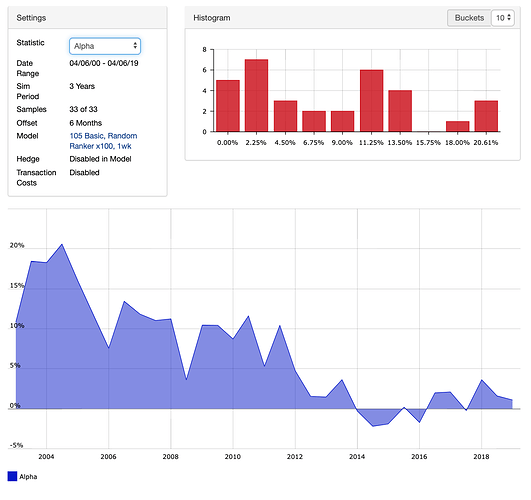“Hi all, I was searching for studies of technical trading and came across this presentation by Aswath Damodaran that lists some items that might be of interest to users here. It’s more of a broad survey, but might spark some backtests.”
I respect Damodaran’s work on fundamental analysis and I have actually employed some of his techniques on occasion. An example is how he proposes to calculate cost of equity for stocks that don’t have sufficient market data, or are going through a capital restructuring or M&A. There is some priceless work - readers will have to do their own internet search however for such info because I don’t have links at hand.
He is one of the few academics that I respect. HOWEVER, he is not a technical analyst and I have to be critical of his logical arguments in this presentation. I am going to expose one example from his presentation to state my case. The problem with academics, in general, is that they have an objective in mind at the beginning of a paper and it causes a bias in their thinking and ultimate findings. Academics don’t think “I am going to spend a gazillion hours researching and writing a paper” without first understanding for what purpose they are doing so, how the conclusion will be received by his/her peers, and what the work will ultimately accomplish.
In the case of this presentation, Mr. Damodaran states his bias up in the first three words of the title (Smoke and Mirrors). So it is not surprising to see anti-TA bias within the presentation. I am going to restrict my dissection to his arguments regarding the weekend effect. He presents a nice day-of-week column chart of returns by day of the week from 1927 to 2001.
This particular day of week chart and conclusions is like making the following argument… “over the last century, Americans have drunk 2 bottles of beer per day on average. Therefore prohibition never occurred.” One can not conclude anything based on long-term statistics. This is true not only of technical analysis. but also in fundamental analysis. It is a dynamic environment and factors come and go, there is no universal truth.
Now the folly in Damodaran’s presentation of the weekend effect becomes clear in his next chart which breaks down the day of week effect in 5-year chunks. His intent was to show that the effect was “all over the map” and therefore not tradable. But if his biases were not in control of his (normally very logical) mind, he would have realized that the stock market crash of 1987 strongly shaped the day of week characteristics for at least the next decade. The crash occurred on a Monday and hence dramatically skewed the 1986-1990 Monday returns. And you can also see that traders’ strategies were impacted from that point forward. They no longer held positions over the weekend due to the possibility of a repeat crash. This impact can be seen right into the early 2000s.
The other observation that i would like to make on the chart is that the returns are off by at least an order of magnitude. Positive Monday returns of 0.05% post-1987 crash are simply wrong. I know because I did a lot of work on developing a Monday trading system back in the 1990s. For the SP500 the Monday return was on the order of 1%, not 0.05%. The effect was definitely tradeable and in the opposite direction that Damodaran had suggested based on long term stats.
In summary, I love Damodaran’s work on fundamental analysis but I suggest staying away from his attempts at scrutinizing technical analysis. This is not his forte. Just because he is a genius when it comes to fundamentals doesn’t mean he knows what he is talking about when it comes to Technical Analysis.
Steve


